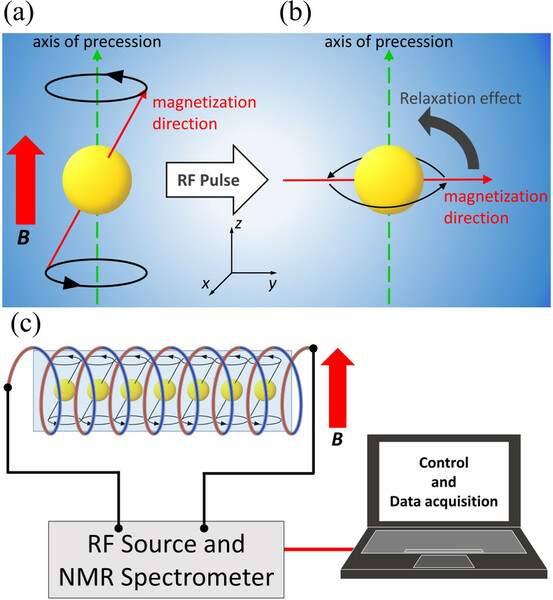Contrast-Enhanced Magnetic Resonance Imaging at Earth’s Magnetic Field Using Trace Gd3+ and Ho3+ Salts
(1) Westlake High School, Austin, Texas, (2) University of Texas at Dallas, Richardson, Texas
https://doi.org/10.59720/16-100
Here, we report a study of contrast-enhanced magnetic resonance imaging at Earth’s field. In this study, we performed magnetic relaxation measurements of protons in water in the presence of the lanthanide ions Gd3+ and Ho3+ using the nuclear magnetic resonance technique. The results suggest that Gd3+ is a more effective T1 and T2 relaxation agent than Ho3+ and is therefore a better contrast agent. We then confirmed the relaxation phenomenon by performing a T1-weighted-contrast magnetic resonance imaging (MRI) of samples containing water doped with Gd3+ at the Earth’s magnetic field. The T1-weighted imaging experimental result indicates that the intensity is the highest for the sample doped with the highest concentration of Gd3+ and lowest for the undoped sample. This work shows the feasibility of performing contrast-enhanced MRI in Earth’s magnetic field using relaxation agents such as lanthanide ions. In addition, this work also demonstrates that, although the Earth’s field MRI does not provide the strength and capability of a clinical MRI, it is still useful as a powerful demonstration tool, especially considering its low operating costs and portability.
This article has been tagged with: